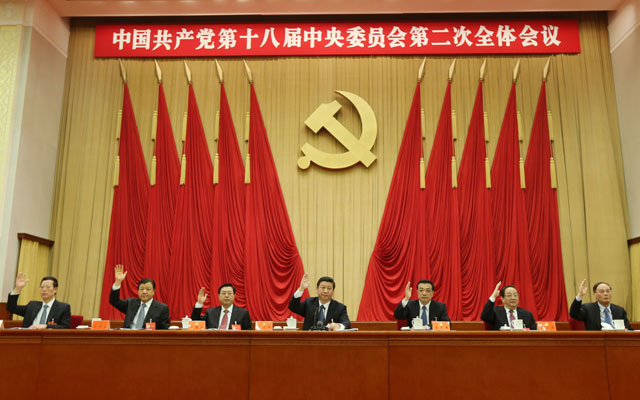Amidst all the regional concerns about North Korea, the Senkaku dispute between China and Japan has continued to fester. This past week, the situation has escalated, with the Chinese Foreign Ministry specifically stating that the Senkakus are a “core interest.” General Martin Dempsey, Chairman of the U.S. Joint Chiefs of Staff, confirmed that the Chinese had used this term in his discussions with them as well.
In response to a question about whether the Diaoyu Dao (China’s name for the Senkakus) were a Chinese core interest, Foreign Ministry spokesperson Hua Chunying referred to the 2011 Chinese white paper on “peaceful development.” In the official transcript of her remarks she noted that “China has maintained that core interests include national sovereignty, national security, and territorial integrity. The Senkaku issue touches upon Chinese territorial sovereignty.” In the recording, however, she is much more emphatic: “The Diaoyu Dao issue touches upon the subject of Chinese territorial sovereignty. Of course it pertains to China’s core interests.”
As the Foreign Ministry spokesperson indicated, the Chinese use of the term core interest has generally been associated with issues of national sovereignty, especially those involving Tibet, Xinjiang, and Taiwan. Wavering on any of these issues raised the possibility of independence movements exploiting the moment to press for independence, with a clear impact on Chinese territorial control and national security calculations.
But the gravity of such issues also meant that the term core interest was not one loosely applied by Beijing. Until this statement by the Chinese Foreign Ministry spokesperson, the People’s Republic of China (PRC) had not officially listed the Senkakus as a core interest, although state-run publications have previously published columns making such claims.
Most notably, in January 2012, People’s Daily, an official newspaper of the PRC, published a column stating that Japan’s claims to the Senkakus “were an overt attempt to harm China’s core interests.” In essence, the PRC was implying that territorial disputes involved Chinese core interests, leaving themselves diplomatic room to maneuver.
Over the past several years, however, the PRC has been pursuing an increasingly assertive stance on territorial issues, not only in the Senkakus, but also in the South China Sea and on the Sino–Indian border. In doing so, they are decreasing their room to maneuver and staking out positions that are antagonizing most of their neighbors simultaneously.
In the case of the South China Sea, there were reports in 2010 that Chinese officials, including State Councillor Dai Bingguo, had referred to the area as a core interest to U.S. officials, using the term in meetings in 2010 with Deputy Secretary of State James Steinberg and National Security Council Asia Director Jeffrey Bader. In a subsequent interview, then–Secretary of State Hillary Clinton reiterated that “it was the Chinese State Councillor responsible for foreign policy, Dai Bingguo, who described the South China Sea to her as a core interest of China.”
China has since dispatched a naval task force to South China Sea waters around Jones Reef, claimed by Malaysia. This marks a major escalation in Chinese activity. Not only is this the first use of Chinese naval forces (rather than civilian law-enforcement vessels) but it is also the first major move against Malaysia, which has generally adopted a low-key approach to the South China Sea claims. At the same time, China has rejected an attempt by the Philippines to submit their dispute to arbitration under the U.N. Law of the Sea Treaty (LOST).
Meanwhile, Chinese military forces crossed the “Line of Actual Control” between the PRC and India, and established a camp deep in Indian-held territory, as part of the ongoing disputes between Beijing and New Delhi, India, over the precise location of their borders. China, in effect, made clear its ability to change the facts on the ground, shifting the Line of Actual Control that delimits the boundaries between the two Asian giants. While those forces have now withdrawn, the incursion nonetheless marks another example of China pushing its territorial claims.
Chinese government statements that the Senkakus are a Chinese core interest are part of a general hardening of China’s position on territorial disputes. Whereas it had been more flexible in the late 1990s and early 2000s with its Russian and Central Asian neighbors, today’s China is far less willing to compromise, and is staking out positions that are increasingly difficult to back away from. What Beijing fails to recognize is that its single-minded pursuit of its territorial claims risks running afoul of the core interests of its neighbors, whose own national sovereignty, national security, and territorial integrity are being jeopardized as a result.
